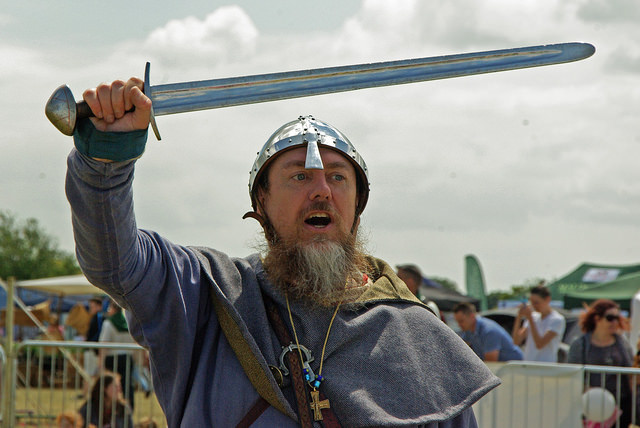
This post continues a discussion of interesting tidbits from The Vikings and Their Enemies – Warfare in Northern Europe, 750 -1100 by Philip Line.
Previous discussions described the limits of our knowledge and battle techniques. This discussion focuses on campaigns and sieges.
Campaigns
Size of armies, and their mobility depended on the quality of roadwork, which deteriorated after the decline of the Roman Empire. Poor road systems suggest there was more use of pack animals than of wheeled transports, which would slow down a mobile force.
Another constraint is the horses and mules would have to rest one day out of every six to prevent injury. Horses of the time would have gotten more of their nutrition from grazing than horses today, which require more hard grain. This means horses would have to graze for somewhere between four and five hours every day to maintain their strength.
Grazing 4 or 5 hours every day and resting 1 day out of 6 would have substantially slowed a mobile force.
Main strategy of a medieval army on campaign was to avoid a major fixed battle and focus instead on small-scale raids which are relatively lower risk. Plundering the enemy territory would’ve been the goal: gathering food, portable wealth, and slaves.
The apparent strategy was to plunder an area until there is nothing worthwhile left to plunder or the Vikings were paid enough silver to go away.
Author says getting a complete victory on the battle field was quite difficult in medieval Europe.
Vikings used their maneuverable ships to travel upstream on navigable rivers. Author points out that none of their enemies were able to figure out how to counter Viking mobility.
Raids started out with small groups but began increasing in size during the mid-800s. Eventually raiding parties grew to be forces of a few thousand.
The Vikings were good at practical defenses, such as throwing up banks around the camps or picking someplace with natural defenses on their flanks.
Sieges
Long-term sieges were difficult to pull off in the medieval era. While you are trying to starve out the town you have besieged, you have the problem of stripping the surrounding area of crops, livestock, timber for cooking, and everything else you need to keep your troops functioning. The troops conducting a siege might run out of food and supplies before the besieged.
Disease was another problem. The troops conducting a siege could start losing troops because of diseases, most likely pneumonia, typhus and dysentery, according to the author.
How did sieges end?
There would likely be lots of negotiation since forces would be within shouting distance of each other (also with lots of time on their hands). Terms could be negotiated, which would likely result in tribute paid by the besieged.
A short-term siege would have more favorable outcomes to the defenders. A long-term siege would have higher chances of reprisal against inhabitants.
If there were a negotiated settlement, treatment of prisoners would depend upon the goal of the conqueror, whether there was some political vendetta to repay or examples to be made of the besieged in order to intimidate other nearby towns.
If the town was taken by storm, massacre was far more likely as the outcome. Ironically, the author points out leaders would usually rather not take a town by storm because the out-of-control troops would destroy stuff and steal things, thus reducing the amount of plunder and slaves the commanders would get for themselves.
Women were treated horribly in the medieval era. They were often considered spoils of war. Author points out that it is difficult to find any difference in how the Vikings treated women when compared to treatment received from the Irish, English, Slavs, Magyars, or anyone else. All groups treated conquered women horribly. Military age men would be killed in a conquest and the women and children carried off as slaves, with many women becoming involuntary concubines.
Next post: wrapup